In the ever-changing landscape of digital marketing, being able to keep up with changes in the latest tools—like Google Ads—makes all the difference in how successful your campaigns will be.
One such oft-overlooked but really important feature in Google Ads is reporting columns.
These columns are not just for tracking clicks or conversions; they offer a comprehensive view of your campaign performance, helping you make data-driven decisions to optimize your strategies.
In this article, we will go in-depth into the importance of reporting columns, explore recent updates, and share best practices to make the most out of them.
Let’s start with a foundational understanding of Google Ads reporting columns and why they are essential for your advertising campaigns.
Introduction to Google Ads Reporting Columns
Google Ads reporting columns are the backbone of any successful campaign analysis.
These customizable columns provide advertisers with detailed insights into metrics like clicks, impressions, conversions, and much more.
Whether you’re a seasoned marketer or new to Google Ads, understanding these columns is the first step toward improving your campaign performance.

A Detailed Look at Google Ads Reporting Columns.
Overview of Reporting Columns
Reporting columns in Google Ads allow advertisers to break down complex data into digestible insights.
They are fully customizable, meaning you can choose which metrics matter most to your campaigns and tailor reports accordingly.
For example, you can include metrics like click-through rate (CTRClick-Through Rate, the ratio of clicks to impressions in advertising.), cost-per-click (CPCCost-Per-Click, the amount an advertiser pays for each click on their ad.), and conversion rate to get a clearer picture of your ad performance.
- Click Metrics: Track how often users click on your ads and identify which ads drive the most engagement.
- Conversion Data: Measure the number of desired actions users take, such as purchases or sign-ups.
- Cost Analysis: Monitor the cost-effectiveness of your campaigns by analyzing CPC and return on ad spend (ROAS).
These insights are invaluable in identifying what works, what doesn’t, and where adjustments are needed to maximize ROIReturn on Investment, a measure of the profitability of an advertising campaign..

Analyzing Campaign Performance for Optimization.
Importance in Campaign Analysis
The importance of reporting columns cannot be overstated.
They are your window into performance, including:
- Trend and Pattern Spotting: Identify trends and patterns over time.
- Addressing Underperformers: Pinpoint underperforming areas that need improvement.
- Budget Optimization: Reallocate resources to high-performing ads for better ROI.
When applied correctly, reporting columns translate raw data into actionable strategies, ensuring that every advertising dollar produces its optimal outcome.
Moving forward, we will discuss recent changes to these reporting columns and how they can be used to further improve your campaigns.
Understanding the basics of Google Ads reporting columns is critical for campaign success. These tools provide granular insights into key performance metrics, setting the stage for data-driven decisions.

Reviewing Recent Google Ads Reporting Updates.
Recent Updates to Reporting Columns
Staying updated with the latest enhancements in Google Ads reporting columns is crucial for optimizing your advertising strategies.
In 2024, Google introduced several significant updates aimed at providing advertisers with more granular insights and improved campaign performance.

Analyzing Asset-Level Conversion Data for Campaign Optimization.
New Asset-Level Conversion Data in Performance Max
One of the notable updates is the introduction of asset-level conversion data in Performance MaxA Google Ads campaign type that uses automation to optimize performance across all Google channels. campaigns.
This feature lets you:
- Gain Detailed Insights: Understand how individual assets contribute to conversions, enabling more precise optimization.
- Identify Top-Performing Assets: Determine which creatives drive the most value, allowing for informed decisions on asset utilization.
- Enhance Campaign Performance: Replace underperforming assets with high-performing ones to improve overall campaign effectiveness.
Leverage this data to refine your creative strategies, better allocate resources, and increase your ROI.

Analyzing Brand Performance Across Campaigns and Channels.
Introduction of Brand Report for Advertisers
Another significant upgrade is the introduction of the Brand Report feature.
This tool provides:
- Comprehensive Brand Performance Metrics: Get detailed information about how your brand is performing across campaigns and channels in one place.
- Improved Brand Safety Controls: Keep track of where your ads are running to ensure they align with your brand values and standards.
- Enhanced Audience Insights: Gain a better understanding of your audience demographics and engagement levels.
By using the Brand Report, you will be able to maintain brand integrity, optimize ad placements, and understand your target audience better to create more effective advertising strategies.
These updates to the reporting columns in Google Ads equip advertisers with deeper insights and more control over their campaigns.
By understanding these changes and adjusting to them, you can make your advertising more effective and achieve better results.
The latest updates in 2024, including asset-level conversion data and the Brand Report feature, empower advertisers to optimize their campaigns with precision and maintain brand integrity.
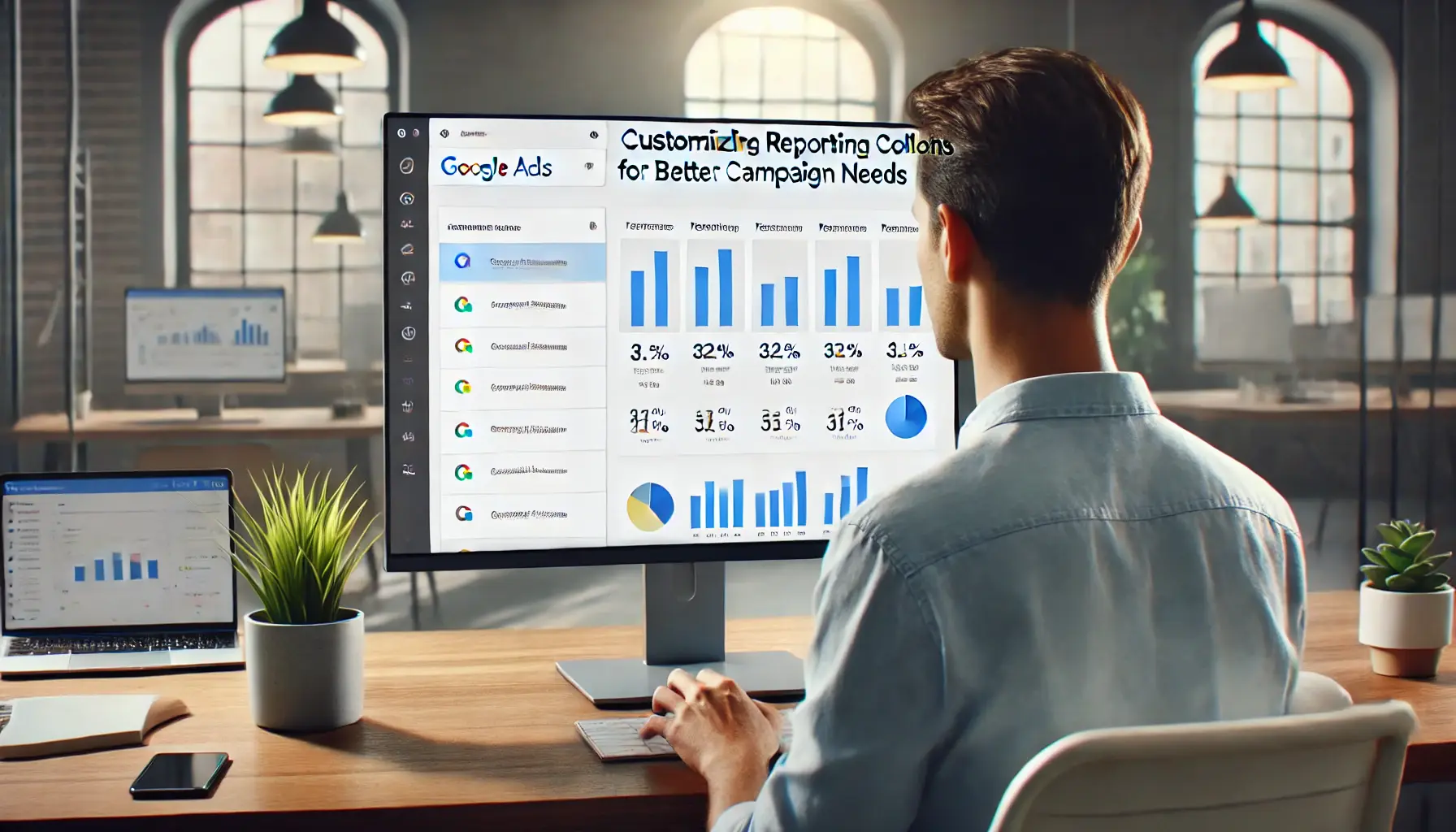
Customizing Reporting Columns for Better Campaign Analysis.
Enhancing Reports with Custom Columns
In Google Ads, custom columns allow you to personalize your data analysis and display insights tailored to your business objectives.
By combining existing metrics, applying formulas, and building new performance indicators, custom columns offer enhanced flexibility and a more granular analysis of your campaigns.
This level of customization supports informed decision-making and strategic optimization.
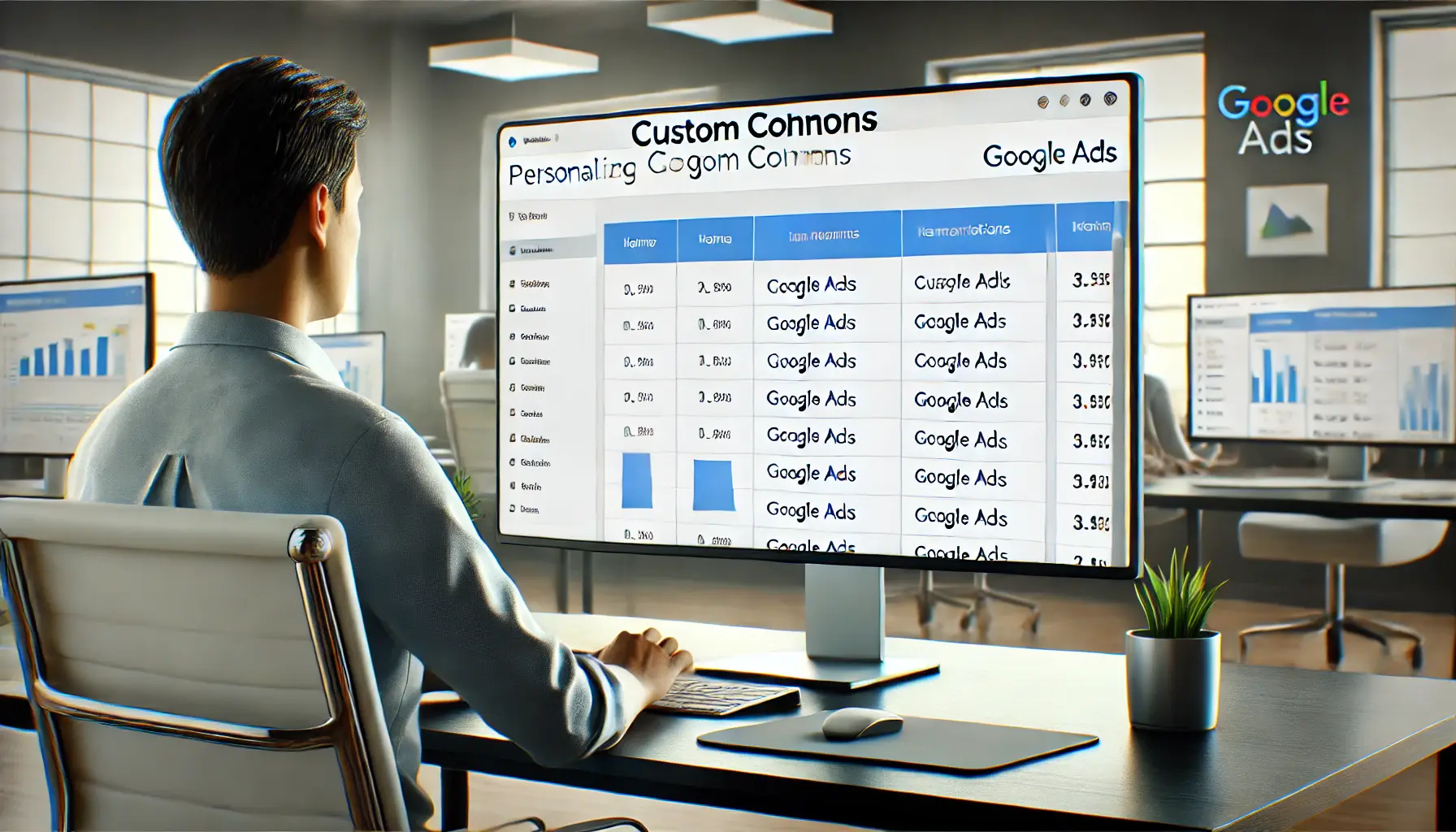
Customizing Columns for Personalized Google Ads Reports.
Creating Custom Columns in Google Ads
Setting up custom columns in Google Ads is a straightforward process:
- Access Your Account: Log in to your Google Ads account and navigate to the desired campaign or ad group.
- Modify Columns: Click on the ‘Columns’ button above your data table and select ‘Modify Columns.’
- Add Custom Column: Scroll down to the ‘Custom Columns’ section and click on the ‘+ Custom Column’ button.
- Define the Column: Enter a clear name and description for your custom column. Select the metrics and apply any necessary formulas to create your desired metric.
- Save and Apply: Once configured, save the custom column and add it to your data table for immediate analysis.
By following these steps, you can create custom columns that provide deeper insights into your campaign performance, tailored to your specific needs.

Reviewing Custom Campaign Metrics for Optimization.
Examples of Effective Custom Columns
Implementing custom columns can significantly enhance your reporting capabilities.
Here are a few practical examples:
- ROAS (Return on Ad Spend): Calculate the efficiency of ad spend by dividing total conversion value by total cost. This metric helps assess the profitability of your campaigns.
- Cost per Conversion by Device: Segment cost per conversion metrics to determine the cost-effectiveness of ads across different devices. This insight aids in optimizing device-specific bids.
- Engagement Rate: Measure user interaction by dividing the number of engagements (clicks, likes, shares) by the number of impressions. A higher engagement rate indicates more compelling ad content.
- Projected Monthly Spend: Forecast your monthly expenditure based on current spending patterns to manage budgets effectively and prevent overspending.
- Conversion Rate by Network: Analyze conversion rates across different networks (Search, Display) to identify where your ads perform best, allowing for strategic allocation of resources.
Utilizing these custom columns enables a more nuanced understanding of your campaign performance, allowing for targeted optimizations and improved outcomes.
Creating custom columns allows advertisers to personalize their analysis, apply unique formulas, and gain deeper insights tailored to their objectives.

Monitoring and Optimizing Google Ads Reporting for Effective Campaign Management.
How to Use Reporting Columns Effectively
Effectively leveraging reporting columns in Google Ads is crucial to optimizing your advertising campaigns.
By following best practices, you can gain actionable insights and make informed decisions to enhance performance.

Defining Success Metrics for Google Ads Campaigns.
Define Clear Success Metrics
Establish clear goals for your campaigns, such as increasing click-through rates (CTR), reducing cost per acquisition (CPA), or boosting return on ad spend (ROASReturn on Ad Spend, a metric calculating revenue generated for every dollar spent on advertising.).
Clear objectives guide your analysis and help you focus on relevant data.
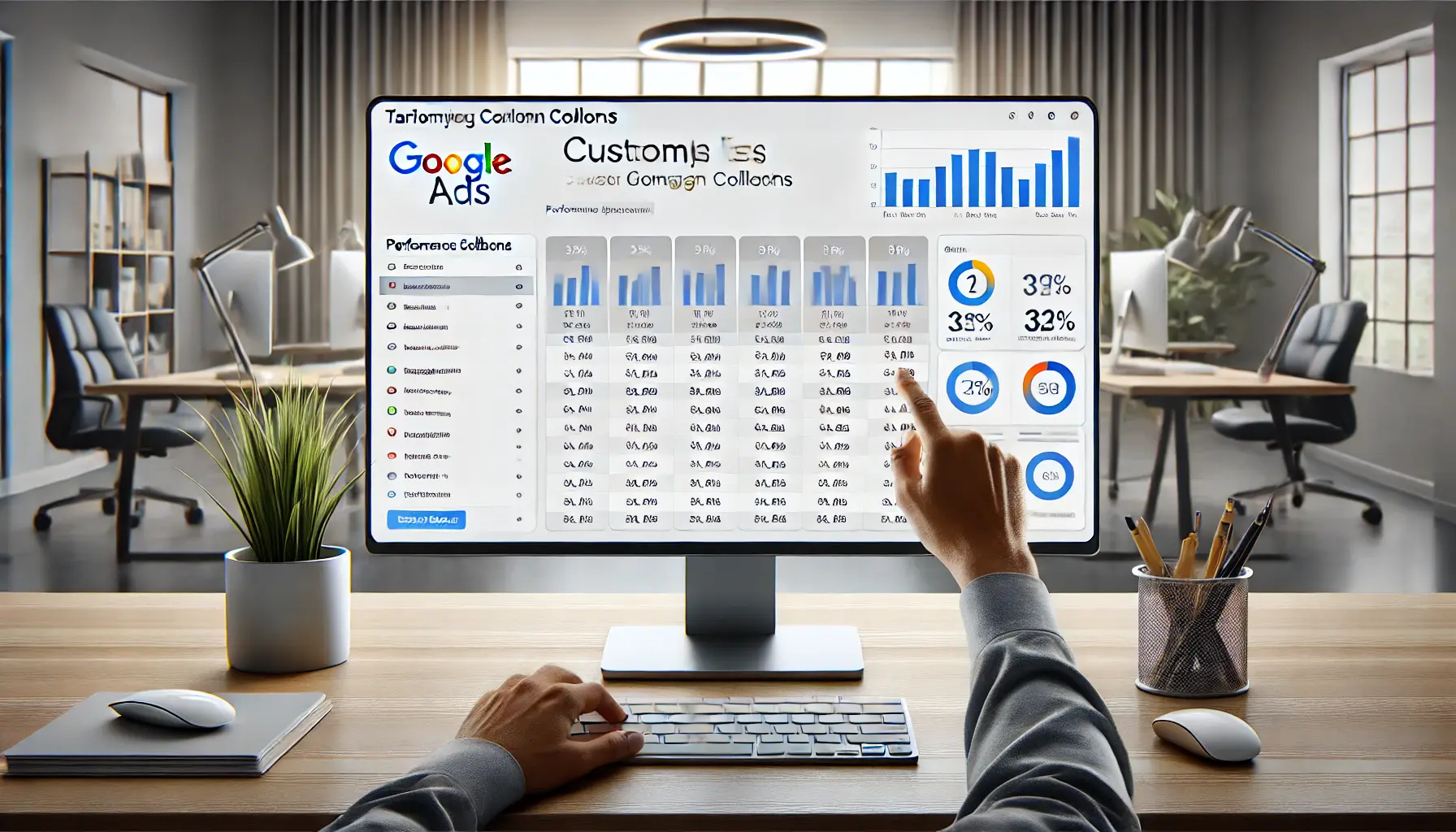
Customizing Google Ads Columns to Align with Campaign Objectives.
Customize Columns to Align with Objectives
Tailor your reporting columns to reflect the metrics that matter most to your business.
Utilize custom columns to create unique metrics or formulas based on existing data, providing a personalized view of performance.
This customization enables more advanced analysis and insights.

Reviewing Segmented Campaign Data for Detailed Insights.
Utilize Segmentation for In-Depth Analysis
Segment your data by dimensions such as device, location, or audience to uncover performance variations.
This detailed analysis helps identify strengths and areas for improvement within specific segments.

Monitoring and Optimizing Google Ads Campaigns in Real-Time.
Regularly Monitor and Adjust Campaigns
Consistently review your reporting columns to track performance trends over time.
Use these insights to make data-driven adjustments to bids, budgets, and targeting, ensuring continuous optimization.
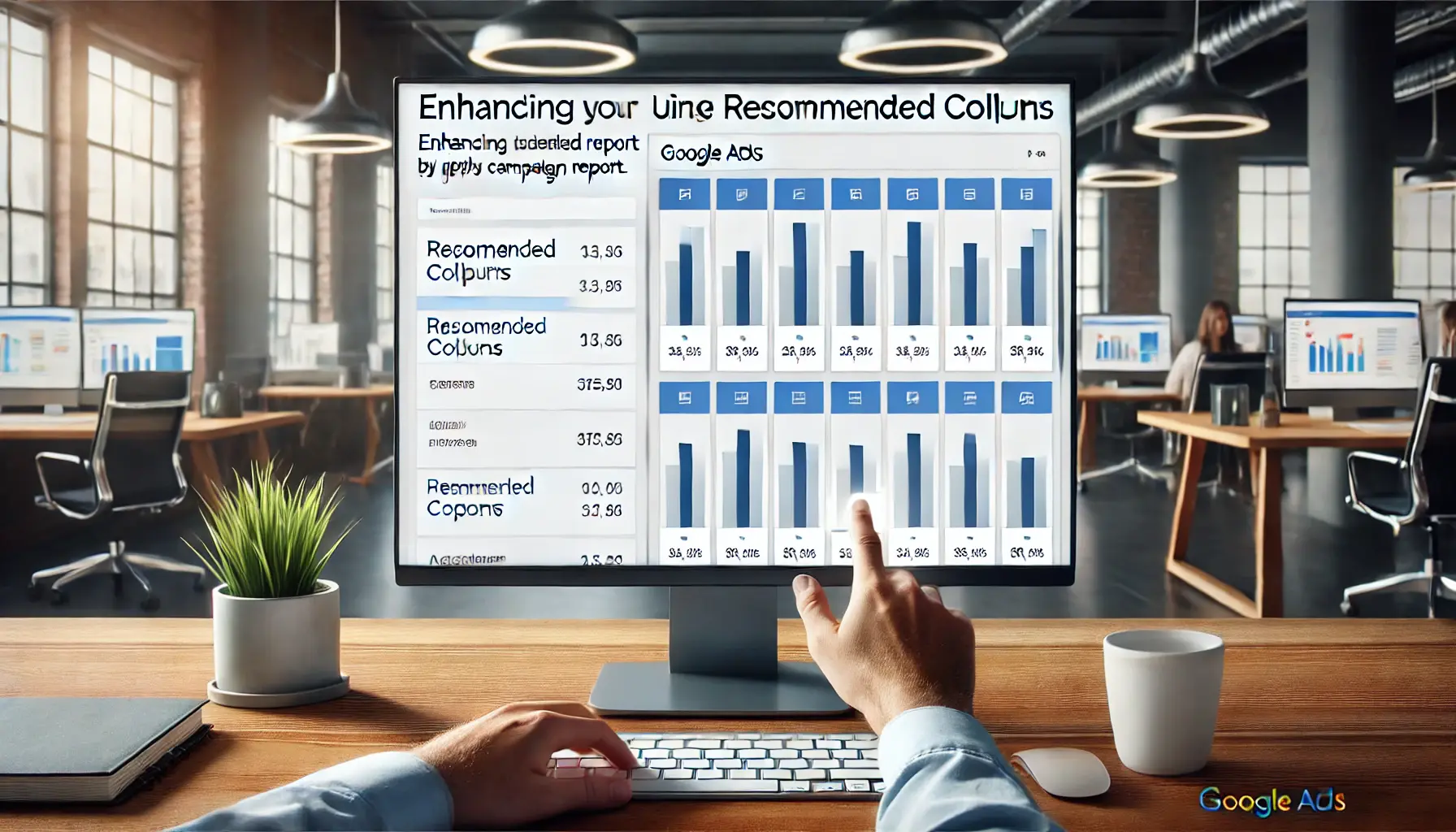
Applying Recommended Columns for Enhanced Reporting in Google Ads.
Implement Recommended Columns
Google Ads may suggest new reporting columns based on your campaign settings.
Implementing these recommended columns can provide additional insights and enhance your analysis.

Visualizing Campaign Data with Charts and Graphs for Better Insights.
Visualize Data for Better Understanding
Utilize charts and graphs to represent your data visually.
Visualizations make complex data more digestible and highlight key trends and patterns, driving better decision-making.
By keeping these best practices in mind, you can maximize the value of Google Ads reporting columns, driving your strategy and improving the performance of your campaigns.
To maximize the effectiveness of reporting columns, advertisers should define clear metrics, leverage segmentation, and regularly adjust campaigns based on insights.

Exploring Future Trends in Google Ads Reporting with Advanced Data Insights.
Future Trends in Google Ads Reporting
As digital advertising continues to evolve, Google Ads is upgrading its reporting columns to offer more comprehensive and actionable insights to advertisers.
Understanding future trends for reporting columns is crucial to staying ahead in your campaigns.

Leveraging AI for Advanced Analytics and Campaign Insights.
More Artificial Intelligence Integration
Artificial Intelligence will have a more significant role in Google Ads reporting columns.
AI-driven analytics will enable:
- Automated Data Analysis: Streamlining the interpretation of complex datasets to uncover patterns and trends without manual intervention.
- Predictive Insights: Forecasting future campaign performance based on historical data, allowing for proactive adjustments.
- Personalized Reporting: Tailoring reports to highlight metrics most relevant to your business objectives, enhancing decision-making efficiency.
Embracing AI-powered reporting tools will facilitate more efficient and effective campaign management.

Analyzing Cross-Platform Campaign Metrics for Better Performance.
Enhanced Cross-Platform Performance Metrics
With the diversification of advertising channels, Google Ads is expected to offer more robust cross-platform reporting features, including:
- Unified Metrics: Consolidating performance data from various platforms (e.g., Search, Display, YouTube) into a single view for holistic analysis.
- Cross-Device Tracking: Monitoring user interactions across multiple devices to better understand the customer journey.
- Attribution Modeling: Providing more accurate insights into which touchpoints contribute most to conversions, informing budget allocation.
These advancements will enable advertisers to assess the effectiveness of their strategies across different platforms and devices more accurately.

Monitoring Live Campaign Data for Immediate Insights.
Real-Time Data Reporting
The demand for immediate insights is driving the development of real-time data reporting in Google Ads.
This feature will allow advertisers to:
- Monitor Campaigns Instantly: Access up-to-the-minute data to quickly identify and respond to performance issues or opportunities.
- Optimize Bids and Budgets in Real-Time: Make swift adjustments to bidding strategies and budget allocations based on current performance metrics.
- Enhance Responsiveness: Improve the agility of marketing efforts by promptly adapting to market changes and consumer behavior.
Real-time reporting will empower advertisers to make more timely and informed decisions, enhancing campaign effectiveness.

Analyzing Audience Segmentation for Deeper Insights into Campaign Performance.
Advanced Audience Segmentation Analysis
Future updates are likely to include more sophisticated audience segmentation capabilities, such as:
- Detailed Demographic Insights: Gaining a deeper understanding of audience characteristics to tailor ad messaging effectively.
- Behavioral Analysis: Assessing user behavior patterns to identify high-value segments and optimize targeting strategies.
- Custom Segment Reporting: Creating and analyzing reports for bespoke audience segments based on specific criteria relevant to your business.
These enhancements will support more precise targeting and personalized advertising approaches.
By staying abreast of these emerging trends in Google Ads reporting columns, advertisers can leverage new tools and features to refine their strategies, improve performance, and achieve better returns on their advertising investments.
Advancements in AI, real-time data, and cross-platform metrics will shape the future of Google Ads reporting, offering advertisers new tools for refined analysis and decision-making.
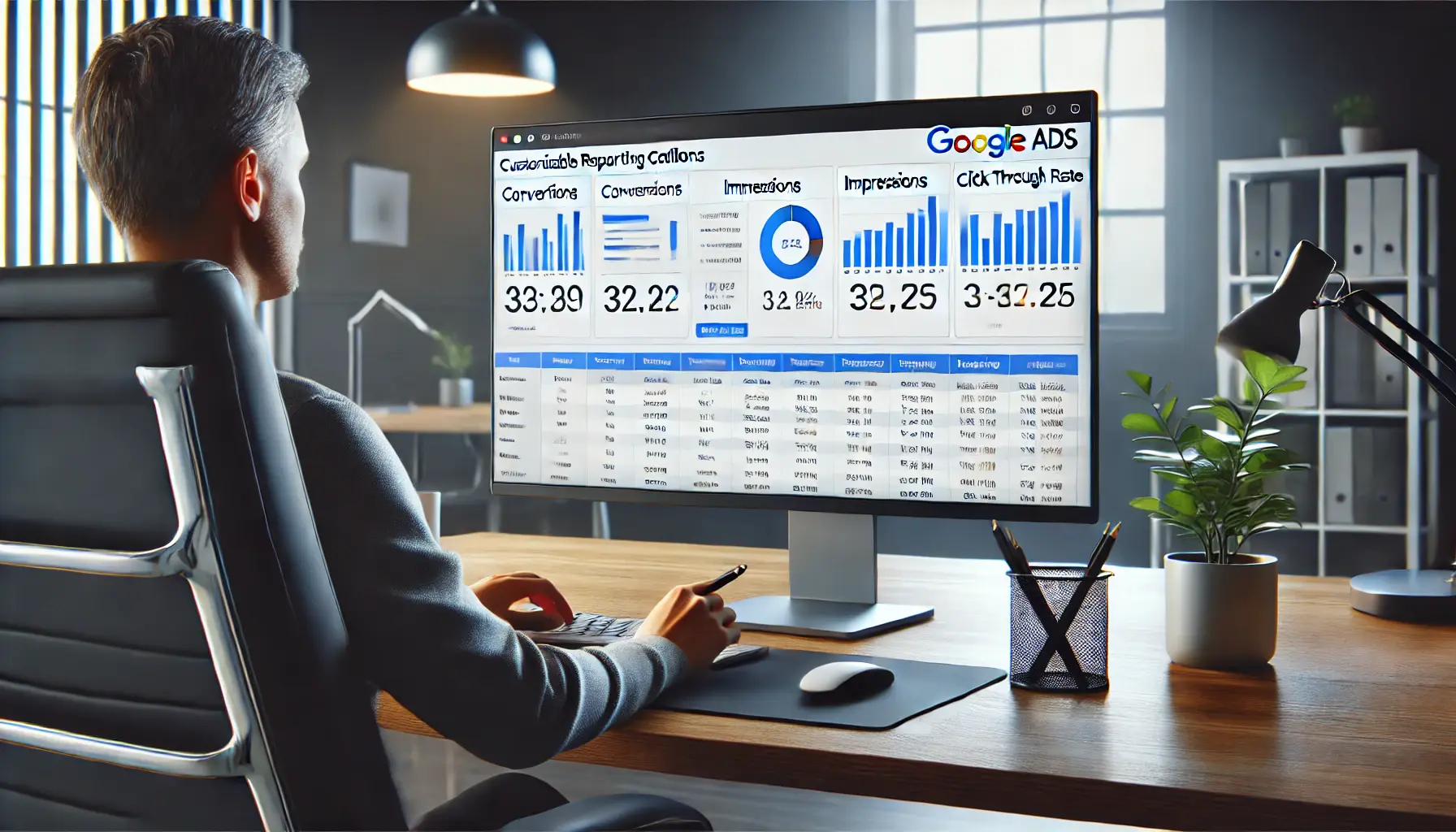
Mastering Google Ads Reporting for Optimized Campaign Insights.
Mastering Google Ads Reporting Columns
The power of reporting columns in Google Ads lies in their ability to provide actionable insights and drive informed decision-making.
By understanding and leveraging these tools effectively, advertisers can optimize their campaigns for maximum performance and ROI.

Reviewing Key Insights from Google Ads Campaign Data.
Key Takeaways
Throughout this article, we explored the multifaceted world of reporting columns, covering their significance, recent updates, best practices, and future trends.
Here are the main points to remember:
- Importance: Reporting columns are essential for tracking campaign performance, analyzing data, and making strategic adjustments to meet your advertising goals.
- Recent Updates: New features like asset-level conversion data in Performance Max campaigns and enhanced Brand Report tools provide deeper insights for advertisers.
- Custom Columns: Customizable metrics enable tailored analysis, offering unique perspectives on performance aligned with your business objectives.
- Best Practices: Defining clear goals, utilizing segmentation, and regularly monitoring columns ensure continuous optimization and success.
- Future Trends: Advancements in AI integration, real-time reporting, and enhanced cross-platform metrics will shape the future of Google Ads reporting.

Reviewing Actionable Steps for Campaign Optimization in Google Ads.
Actionable Steps for Advertisers
To fully capitalize on the potential of reporting columns, advertisers should:
- Define success metrics that align with their business objectives.
- Leverage custom columns to create meaningful and personalized performance indicators.
- Adopt AI-driven tools and stay informed about emerging trends in Google Ads reporting.
- Implement recommended columns and regularly update their data analysis strategies.

Reflecting on Campaign Performance and Preparing for Next Steps.
Final Thoughts
Google Ads reporting columns are an indispensable asset for modern advertisers.
In this ever-evolving digital advertising landscape, staying on top of updates and adopting best practices will keep you competitive.
Equipped with these tools and insights, you can refine your strategies for better campaign outcomes and achieve sustainable growth in your advertising efforts.
Mastery of reporting columns involves leveraging updates, using best practices, and staying ahead of trends to optimize campaigns for maximum ROI.

Reviewing FAQs to Understand Google Ads Reporting Columns Better.
Your campaigns can be managed by an agency specialized in Google Ads, check out our service page.
Google Ads Reporting Columns: Frequently Asked Questions
Understanding Google Ads reporting columns is crucial for effective campaign management.
Here are some common questions and concise answers to help you navigate this feature.
Reporting columns display different metrics in your Google Ads account, such as clicks, impressions, and conversions, which help you gauge the performance of your campaigns.
In your Google Ads account, click on the ‘Columns’ button above your report, select ‘Modify Columns,’ and choose the metrics you want to include.
Tailoring columns ensures more relevant analysis.
Custom columns are personalized metrics created by combining existing data, enabling specific analyses tailored to your business objectives.
Using custom columns provides deeper insights into performance aspects, helping you make informed decisions and optimize your strategies effectively.
Go to your Google Ads account, click ‘Columns,’ then ‘Modify Columns,’ scroll to ‘Custom Columns,’ click ‘+ Custom Column,’ and define your metric.
This process personalizes your reports.
Yes, after configuring your columns, click ‘Save your column set’ to preserve the setup for future reports, ensuring consistency and saving time.
Recommended columns are suggested by Google Ads based on your campaign settings, helping you focus on the most relevant metrics for your goals.
In your Google Ads account, click the ‘Columns’ button to modify your table’s columns, and check or uncheck the recommended columns as needed.
Ensure your custom column includes a valid name, formula, and data format that aligns with the formula to save it successfully.












